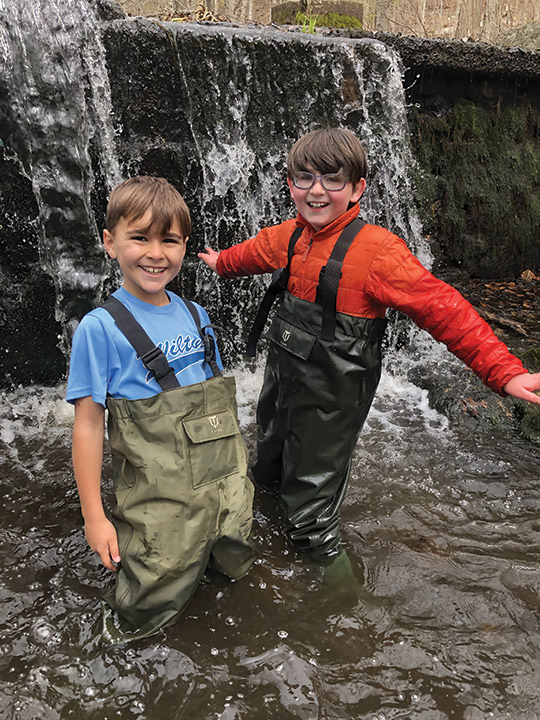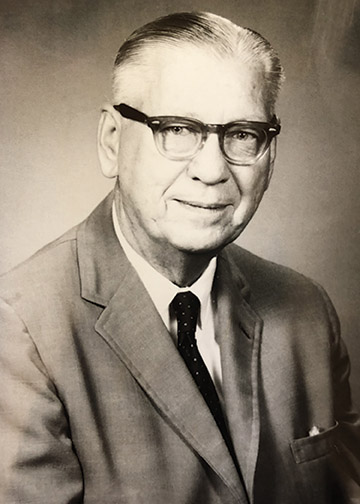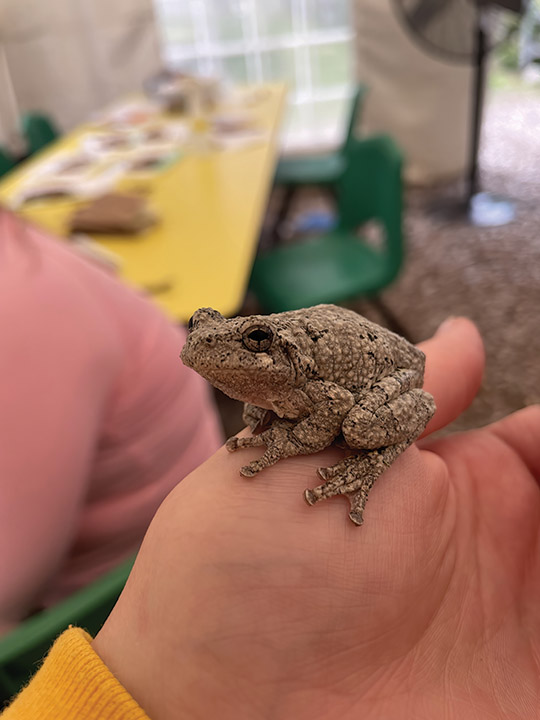For fifty years, Woodcock Nature Center has grown from one man’s vision of a nature refuge to a community treasure. Much time has passed, but the heart of Woodcock’s mission, a passionate staff and board, and perhaps most importantly, the dedication of a community to support such an endeavor, has
never wavered.
 When Woodcock Nature Center was founded it was a labor of love brought about by a handful of passionate individuals who had the foresight to understand how valuable this resource would be to the community. One crucial individual, without whom this nature center would not exist, is its namesake: J. Mortimer “Woody” Woodcock.
When Woodcock Nature Center was founded it was a labor of love brought about by a handful of passionate individuals who had the foresight to understand how valuable this resource would be to the community. One crucial individual, without whom this nature center would not exist, is its namesake: J. Mortimer “Woody” Woodcock.
The 1992 obituary for J. Mortimer “Woody” Woodcock describes him as a “soft-spoken, cigar smoking, first selectman of Ridgefield.” He held his post as First Selectman of the town from 1967-1971 and served on numerous boards and committees (too many to list!) and was named “citizen of the year” by the Ridgefield Rotary Club.
In the early 1970s, Mr. Woodcock noticed that the State of Connecticut was buying large tracts of land for the Norwalk River Flood Control Project. One section contained more than 140 acres and a house on the Ridgefield-Wilton line. Mr. Woodcock arranged to have the Town of Ridgefield lease the property at $1 per year from the state and began the process to establish a nature center; one of the few times in Connecticut history that one town leased parkland in another (more than half of the preserve is in Wilton). He even had the foresight to purchase from the state (at auction for $1400 no less!) the four-bedroom two-story house then located at 62 Deer Run Road which would eventually be moved 1000 ft. down the Nature Center’s long driveway to where it currently sits.
 Today, the Woodcock preserve, originally inhabited by the indigenous tribes of the Siwanog, spans 64 acres in Ridgefield and 89 in Wilton, all cared for by Woodcock Nature Center, Inc. (a non-profit organization established on Valentine’s Day 1972) through an ongoing lease arrangement with both the Town of Ridgefield and the State of Connecticut. A 1960s contemporary home built by architect Able Sorensen for his family now serves as classrooms and is home to Woodcock’s more than 20 teaching animals. The aforementioned two-story house serves as offices for staff and is home to the nature center’s caretakers.
Today, the Woodcock preserve, originally inhabited by the indigenous tribes of the Siwanog, spans 64 acres in Ridgefield and 89 in Wilton, all cared for by Woodcock Nature Center, Inc. (a non-profit organization established on Valentine’s Day 1972) through an ongoing lease arrangement with both the Town of Ridgefield and the State of Connecticut. A 1960s contemporary home built by architect Able Sorensen for his family now serves as classrooms and is home to Woodcock’s more than 20 teaching animals. The aforementioned two-story house serves as offices for staff and is home to the nature center’s caretakers.
In the early days, Mr. Woodcock tapped a long list of colleagues to help with a daunting mission to create a nature center for Wilton and Ridgefield including respected conservationist from Redding, Gabrielle Ewing, who became a part-time director tasked with starting the process of establishing the nature center. She even began a modest trail system.
The early vision for the organization was much the same as it is today: to connect the community with nature through unique outdoor programs. From the earliest days, an effort was made to reach out to inner city populations to instill a relationship with nature, afterschool programs encouraged kids to see the outdoors as an extension of the classroom and weekend events brought the community together. Still, a deeply rooted mantra is the idea that “nature is for everyone!”; to this day a scholarship fund allows for no child to be turned away from a camp or youth program.
When Lee McIntire, an English teacher at Ridgefield High School saw an article in the local paper about the new Woodcock Nature Center, he applied and was hired as the first full-time executive director in 1975. In fact, he lived with his family on the property for more than a decade; his family volunteered countless hours to help build Woodcock’s early infrastructure. Mr. McIntire was determined to put his deep love of the natural world to work and began a summer camp. It was around this time that leadership also experimented with ideas such as seasonal sales of bird seed, Christmas trees and wreaths to support a growing array of programs including canoeing and hiking trips for youth, a winter festival, nature walks and wildlife talks.
If many of these programs sound familiar it’s because it was these early programs – which resonated so deeply with the local community – that have continued to blossom. Over the years, Woodcock has been bolstered by countless volunteers (including significant ongoing contributions from local boy and girl scouts) and a dedicated staff who have continued traditions established in the early years, like wreath making and summer camp, while also developing new programs to serve the changing needs of the community.
 These days Woodcock Nature Center finds itself at an exciting stage of growth. The pandemic helped to highlight the critical importance of outdoor experiences and education. Leadership was quick to take advantage of this unique opportunity; doubling down on outdoor events and adding staff to meet the demand for programming. Woodcock’s nearly 4-mile trail system remains open to the public free of change, year-round from dawn to dusk; an on-site custom-built natural playground which is utilized in 90% of programs is also open for curious visitors year-round.
These days Woodcock Nature Center finds itself at an exciting stage of growth. The pandemic helped to highlight the critical importance of outdoor experiences and education. Leadership was quick to take advantage of this unique opportunity; doubling down on outdoor events and adding staff to meet the demand for programming. Woodcock’s nearly 4-mile trail system remains open to the public free of change, year-round from dawn to dusk; an on-site custom-built natural playground which is utilized in 90% of programs is also open for curious visitors year-round.
To celebrate the landmark 50th anniversary, Woodcock has planned a series of special events during 2022 (the next one, the annual Under the Harvest Moon, is scheduled for September 16th) along with commemorative fundraising opportunities to support the growing budget. Woodcock Nature Center does not receive any funds from local towns or the state of Connecticut and fundraises privately for every dollar necessary to sustain its programs and facilities. Woodcock leadership has also been hard at work on a revitalization of the Nature Center’s long-term strategy and visual identity which includes a new look and logo.
Since 1972 Woodcock has grown to provide educational programming for over 4,000 learners of all ages each year including school field trips, summer camp and after-school enrichment programs, which support educational efforts by immersing children in direct experiences with nature. Woodcock partners with local organizations such as Wilton Go Green, Ridgefield Action Committee for the Environment, Wilton Land Conservation Trust, the Norwalk River Watershed Association, local garden clubs, and environmental groups to present hikes, lectures, workshops, and films. Free guided hikes, child and caregiver classes and on-site animal encounters also continue annually to provide a means for the public to engage with and learn from the natural world.
This haven for nature and educational oasis has certainly grown in scope, but the deeply rooted commitment to a proud mission has been carefully handed down. With a little more luck, and lots of ongoing community support, this small but mighty nature center will continue for decades
to come. •